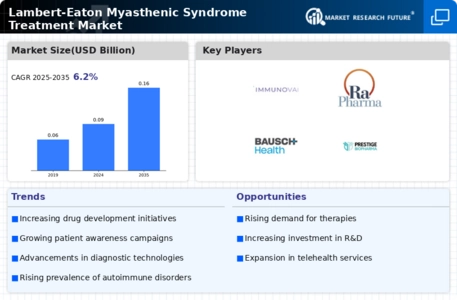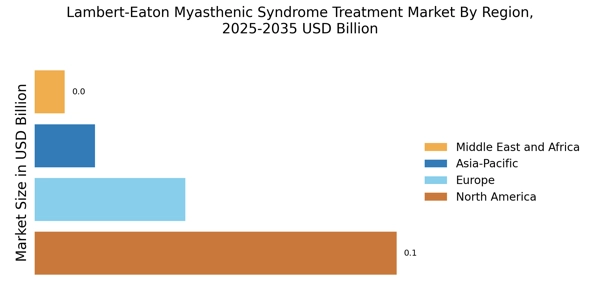Leading players in the Lambert-Eaton Myasthenic Syndrome (LEMS) Treatment Market are actively engaged in strategic initiatives to maintain their competitive edge. This includes investing in research and market developments to innovate new therapies targeting LEMS pathophysiology. Additionally, companies are expanding their geographic presence through partnerships, acquisitions, and collaborations with healthcare providers and research institutions. Some are focusing on patient-centric approaches, such as patient support programs and advocacy efforts, to enhance patient care and satisfaction, thus strengthening their market position.
Manufacturing locally to minimize operational costs is one of the key business tactics used by manufacturers in the global Lambert-Eaton Myasthenic Syndrome Treatment industry to benefit clients and increase the market sector. In recent years, the Lambert-Eaton Myasthenic Syndrome Treatment industry has offered some of the most significant advantages to Hospitals.
Major players in the Lambert-Eaton Myasthenic Syndrome Treatment Market, including Catalyst Pharmaceuticals, Inc., Grifols, S.A., Alexion Pharmaceuticals, Inc., argenx SE, Immunovant, Inc., Ra Pharmaceuticals, Inc., Bausch Health Companies Inc., Jacobus Pharmaceutical Company, Inc., Takeda Pharmaceutical Company Limited, Prestige Biopharma Limited and Others, are attempting to increase market demand by investing in research and development operations.
Catalyst Pharmaceuticals, Inc. is a biopharmaceutical company focused on developing and commercializing innovative therapies for rare neurological diseases, including Lambert-Eaton Myasthenic Syndrome (LEMS). Their lead product, Firdapse® (amifampridine), is approved by the FDA for the symptomatic treatment of adults with LEMS. Firdapse® works by enhancing neuromuscular transmission, thereby improving muscle strength and function in LEMS patients. Catalyst Pharmaceuticals is dedicated to advancing the understanding and treatment of LEMS through ongoing research and development efforts.
The company collaborates with healthcare providers, patient advocacy groups, and regulatory agencies to ensure access to Firdapse® and to improve the quality of life for individuals living with LEMS.
Alexion Pharmaceuticals, Inc. is a global biopharmaceutical company focused on developing and commercializing innovative therapies for rare and ultra-rare diseases, including Lambert-Eaton Myasthenic Syndrome (LEMS). Their product, Amifampridine phosphate, marketed under the brand name Ruzurgi®, is approved by regulatory authorities for the treatment of LEMS in pediatric patients. Ruzurgi® works by enhancing neuromuscular transmission, thereby improving muscle strength and function in LEMS patients. Alexion Pharmaceuticals is committed to advancing the understanding and treatment of LEMS through ongoing research, clinical trials, and collaborations with healthcare providers and patient advocacy organizations.
The company's dedication to rare diseases underscores its mission to transform the lives of patients living with LEMS and other debilitating conditions.


















Leave a Comment